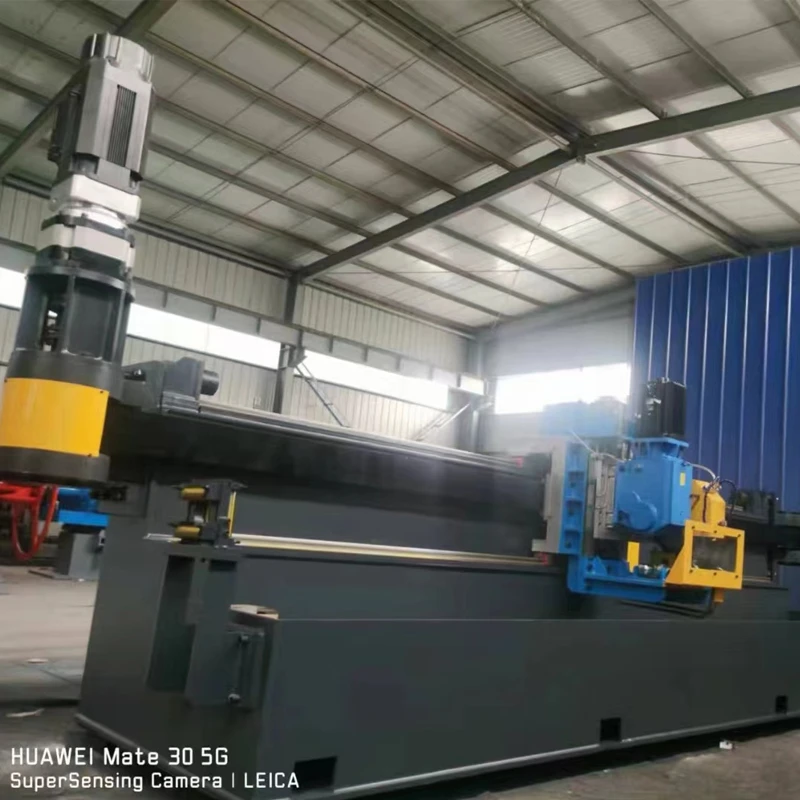Pole Alignment and Straightening Equipment for Enhanced Performance and Durability
Understanding the Pole Straightening Machine A Revolutionary Tool for Industry
In the manufacturing and construction industries, precision and efficiency are paramount. One of the key components in ensuring that structures are both reliable and aesthetically pleasing is the use of straight poles. Poles—whether made of wood, metal, or composite materials—are essential in various applications, from power lines to traffic lights. However, irregularities during the manufacturing process can lead to bent poles, which can compromise structural integrity and performance. This is where the pole straightening machine comes into play.
A pole straightening machine is specially designed to rectify warped or bent poles, restoring them to their original shape and functionality. The machine employs a combination of mechanical force, hydraulic systems, or heat treatment to achieve the desired straightness. This not only enhances the quality of the poles but also significantly reduces waste and the need for excessive inventory, making it an economically sensible option for manufacturers.
The operation of pole straightening machines differs based on the type of pole being processed and the technology employed. Traditional mechanical straighteners use powerful rollers to apply consistent pressure along the length of the pole. As the pole moves through the rollers, any bends or irregularities are gradually corrected. On the other hand, hydraulic straightening machines utilize fluid power to achieve a more controlled and precise bend correction, making them suitable for delicate or highly engineered materials.
In addition to mechanical and hydraulic systems, some advanced pole straightening machines incorporate thermal methods. For materials that can be heat-treated, controlled heating can be applied to specific areas of the pole. Once heated, the material becomes malleable and can be shaped back into the desired form as it cools. This method often leads to a more uniform result, particularly for composite materials that may be sensitive to mechanical stress.
pole straightening machine

The advantages of utilizing a pole straightening machine extend beyond mere aesthetics. Straightened poles are essential for ensuring safety in various applications. For instance, in the realm of electrical infrastructure, a straight pole is crucial for maintaining proper tension on power lines, which prevents unwanted sagging and potential electrical hazards. Additionally, straight poles offer superior load-bearing capabilities, ensuring they can withstand environmental stresses like wind, snow, and seismic activities.
Moreover, integrating a pole straightening machine into the production line can lead to significant savings in terms of labor and time. Manual straightening is labor-intensive and often results in inconsistent quality, whereas machines provide a uniform approach that can significantly enhance throughput. Many modern pole straightening machines are equipped with automation features, allowing for reduced manpower requirements and increased productivity.
Environmental considerations also play a role in the adoption of pole straightening technology. By minimizing the waste of materials and ensuring that existing resources are used efficiently, manufacturers can align with sustainable practices. Straightened poles that meet quality standards reduce the need for new production, lowering overall carbon footprints in the supply chain.
In conclusion, the pole straightening machine is an indispensable tool in modern manufacturing and construction, transforming the way poles are processed. By ensuring that poles are straight and structurally sound, these machines contribute to the overall safety and reliability of numerous infrastructure applications. As technology continues to evolve, we can expect further enhancements in the efficiency, precision, and versatility of pole straightening equipment, making it a cornerstone of future advancements in the industry.
-
High Frequency Straight Seam Welded Pipe Production Line-BzZhou Xinghua Machinery Equipment Manufacturing Co., LTD.|Precision Welding, High EfficiencyNewsJul.30,2025
-
High Frequency Straight Seam Welded Pipe Production Line|BzZhou Xinghua|Precision Welding&EfficiencyNewsJul.30,2025
-
High Frequency Straight Seam Welded Pipe Production Line - BzZhou Xinghua|Precision Engineering&EfficiencyNewsJul.30,2025
-
High-Frequency Straight Seam Welded Pipe Production Line-BzZhou Xinghua Machinery Equipment Manufacturing Co., LTD.NewsJul.30,2025
-
High-Frequency Straight Seam Welded Pipe Production Line-BzZhou Xinghua Machinery Equipment Manufacturing Co., LTD.|Precision Manufacturing, High EfficiencyNewsJul.30,2025
-
High Frequency Straight Seam Welded Pipe Production Line-BzZhou Xinghua Machinery Equipment Manufacturing Co., LTD.|Precision Steel Pipe Manufacturing&Industrial EfficiencyNewsJul.29,2025


